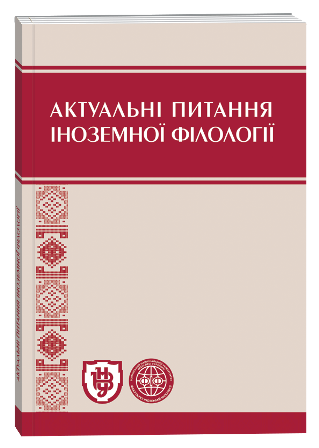DIFFERENT POINTS OF VIEW IN “ANNE OF THE ISLAND” BY L. M. MONTGOMERY
DOI:
https://doi.org/10.32782/2410-0927-2022-16-22Keywords:
Canadian literature, L. M. Montgomery, Bildungsroman, point of view, narrator, image, motiveAbstract
The paper aims to determine the different types of characters’ perspectives, the explicit and implicit factors influencing the switch thereof, and the literary means illustrating the dynamics of perspective switch in Lucy Maud Montgomery’s critically acclaimed novel “Anne of the Island.” In order to establish a solid theoretical basis on which to conduct our research, the paper first explores the concept of “perspective” (also known as “focalisation” or “point of view”) as an essential category in the realm of modern narratology (as explored by F. K. Stanzel, M. Fludernik, G. Genette, W. Schmid, B. Uspensky). Then, based on the novel by L. M. Montgomery, we seek to explore the specificity of narrative strategies employed by the author, namely the ways in which she secures a transition from one perspective to another (in terms of perception, language, ideology etc). It is postulated that L. M. Montgomery’s individual style is characterized by the constant switch of the characters’ narrative positions (in this regard, we should note the diversity of perspectives represented in the novel, as well as the fact that these may often be antagonistic to one another: e. g. perspective of a child/adult, woman/man (girl/boy), Romantic/Philistine etc). The individual flair of every character’s perspective (Anne, Matthew, Mrs. Rachel Lynde etc) is achieved through vivid linguistic means, the use of phraseology, personal remarks etc. These are most discernible in letters from different characters (Mrs. Rachel Lynde, Davy, Stella Maynard etc), even if these characters don’t directly participate in the narrated events. By utilizing the child perspective (which often turns out to be far more astute and sincere than the adult perspective), the author is able to incorporate elements of poignant social criticism into her novel and make fun of particular norms, rules and values most commonly associated with traditional society. The narrator appears to be close to the implied author; however they are not the same. The implied author in L. M. Montgomery’s works is implicit – their perspective is expressed not directly, but through allusions, contrasts, irony etc.
References
Монтгомері Л.-М. Енн із Острова Принца Едварда / пер. з англ. А. Вовченко. Львів : Урбіно, 2020. 272 с.
Успенский Б. А. Поэтика композиции: структура художественного текста и типология композиционной формы. Москва : Искусство, 1970. 225 с.
Шмид В. Нарратология. Москва : Языки славянской культуры, 2003. 312 с.
Brennan J. G. CLASSICS REVISITED: The Story of a Classic: Anne and After. The American Scholar. 1995. Vol. 64. № 2. P. 247–256.
Epperly E. R. The Fragrance of Sweet-Grass: L. M. Montgomery’s Heroines and the Pursuit of Romance. Toronto : University of Toronto Press, 2014. 275 p.
Fludernik M. An Introduction to Narratology. New York : Routledge, 2009. 200 p.
Genette G. Figures I. Paris : Éditions du Seuil, 1965. 264 p.
Hammill F. Literary Culture and Female Authorship in Canada 1760–2000. Amsterdam : BRILL, 2021. 272 p.
MacMurchy M. (1908). L. M. Montgomery of the Island. Lefebvre, The L. M. Montgomery Reader. Vol. 1. P. 129–133.
Montgomery L. M. Anne of the Island. URL: https://www.gutenberg.org/files/51/51-h/51-h.htm
Rubio M. H. Lucy Maud Montgomery: The Gift of Wings. Toronto : Anchor Canada, 2010. 720 p.
Scarth K. (2020). From Anne of Green Gables to Anne of the Suburbs: Lucy Maud Montgomery reimagines home in Anne of the Island. Women’s Writing. Vol. 27. № 2. P. 150–164.
Stanzel F. K. Die typischen Erzählsituationen 1955–2015: Erfolggeschichte einer Triade. Würzburg : Königshausen u. Neumann, 2015. 188 S.







